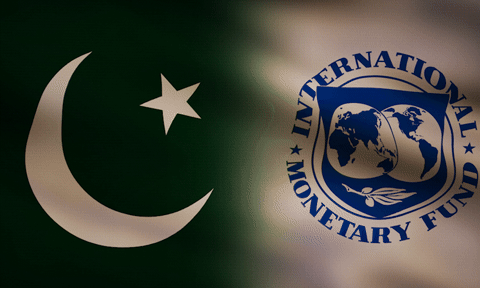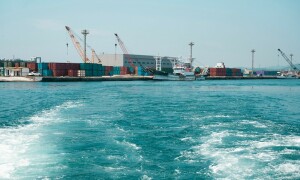The year 2025 starts with many carry-forward challenges from last year’s and further add to new challenges in the years ahead. The plight of the poor of the country has found no relief in the prevailing system of governance in the country where the disparity between the rich and the poor is widening and now blatantly exposed, leading to despondency and simmering social unrest.
The findings of a World Bank report, published this week, state that the poverty rate in Pakistan stood at 25.3 per cent in 2024, showing an increase of seven percentage points compared to 2023, with about 13 million additional people falling into poverty. Moreover, in addition to the projected increase in poverty, poor households face disproportionately higher welfare losses and get pushed deeper into poverty, according to the report titled ‘Poverty Projections for Pakistan’.
The country’s economy, which has been propelled by an IMF bailout, will continue to face severe challenges. The country has missed the IMF condition of collecting over Rs 6 trillion in taxes during the first half of the current fiscal year; it has fallen off the mark by Rs 386 billion.
The incumbent government, on the eve of 2025, launched a five-year national economic plan titled ‘Uraan Pakistan’. The 5Es plan is central to ‘Uraan Pakistan’s’ objectives: Exports, E-Pakistan, Environment and Climate Change, Energy and Infrastructure, and Equity and Empowerment.
The programme aims to bring stability in the country by strengthening the economy. Prime Minister Shehbaz Sharif, on its inauguration, stressed the need for reducing cost of electricity and gas to ensure sustainable growth. He said the local industry should be made more compatible to save foreign exchange and expand exports. Export-led growth is the only option to make Pakistan a stronger economy, he said. The federal government has set an investment target of $10 billion annually, and a conducive environment is being created to attract local investment as well, said the Prime Minister. “Privatisation and outsourcing are vital to save huge losses — for which political dialogue is necessary,” he added.
Finance Minister Muhammad Aurangzeb has said the home-grown economic plan ‘Uraan Pakistan’ will take the country to a place in the next two to three years, making the current International Monetary Fund (IMF) programme the last one. He expressed commitment to completing the structural reforms process, emphasising that the government is also working diligently to reduce its expenditures.
The ‘Uraan Pakistan’ could be a fairly workable programme if ground realities are sincerely recognised and realistic solutions to complex economic issues are worked out and implemented on ground. What is missing in the ‘Uraan Pakistan’ programme are the government strategy and the roadmap for confronting the insurmountable challenges confronting the economic and fiscal landscape of the country. Without finding convincing answers for redressal of these complex issues the programme is unlikely to achieve its objectives.
FBR (Federal Board of Revenue) has found itself grappling with a staggering revenue shortfall of Rs386 billion in the first half of the current fiscal year, a gap that highlights the disconnect between ambitious targets and economic realities. While Rs 5.623 trillion was collected between July and December - a 26 percent jump from last year’s Rs 4.466 trillion - it still falls short of the Rs 6.009 trillion target set for the period.
An answer is required from the government as to how it plans to meet this shortfall unless it is aiming for a mini-budget - which in fact will be more challenging to achieve.
The second key question which needs an answer is identification of a viable solution to the unattainable energy costs hurting the industrial growth of the country, and more significantly export industry’s.
National Electric Power Regulatory Authority (Nepra) has stated that excess generation capacity, persistent administrative and governance issues, combined with lack of planning and under-investment in technology have aggravated the power sector’s difficulties.
In its State of Industry Report 2024 released on Tuesday, the power sector regulator said that key issues identified in the report include high electricity costs, systemic inefficiencies, and a growing circular debt. External factors such as rising fuel prices, a high exchange rate, and long-term RLNG supply agreements; etc., have further exacerbated these challenges, driving up electricity costs and jeopardizing the sector’s long-term sustainability.
One of the biggest challenges facing Pakistan’s electric power sector is the generation capacity, which is currently under-utilised. This low utilisation leads to high electricity costs in the country. By the end of the FY 2023-24, Pakistan’s installed electric power generation capacity reached 45,888MW, including KE’s, while the average annual utilization during the same period was only 33.88 percent.
As a result, electricity consumers ended up paying for 66.12 percent of unutilised capacity.
The third question that needs a plausible answer is about the strategy behind government ambitions to reach the target of an annual investment of USD 10 billion when, according to the data released by the State Bank of Pakistan, foreign investment touched 1.9 billion dollars during the fiscal year 2024. The question is what would be so different from 2025 onwards to make this happen?
“Privatisation and outsourcing are vital to save huge losses” have been described as key to ‘Uraan Pakistan’s’ success.
There is a question mark on sincerity regarding the privatisation process considering the fact that the government is still struggling to set on track the privatization commitment made to IMF, notably of loss-making PIA, Pakistan Steel Mills and Power Distribution Companies.
It is unlikely that the ongoing IMF programme would be last one as it is not only the IMF programme but to it are attached the commitments of other bilateral lenders and loans from friendly nations. Pakistan External Debt reached USD 133.5bn Sep 2024, compared with USD 131.0bn in the previous quarter. The rising trend in external debt is not likely to mellow down anytime in the near future making fresh loans input inevitable.
These are some of the questions that need to be addressed for ‘Uraan Pakistan’ to gain credibility and public optimism about good days ahead.
Copyright Business Recorder, 2025
The writer is a former President of Overseas Investors Chamber of Commerce and Industry (OICCI)























Comments
Comments are closed.